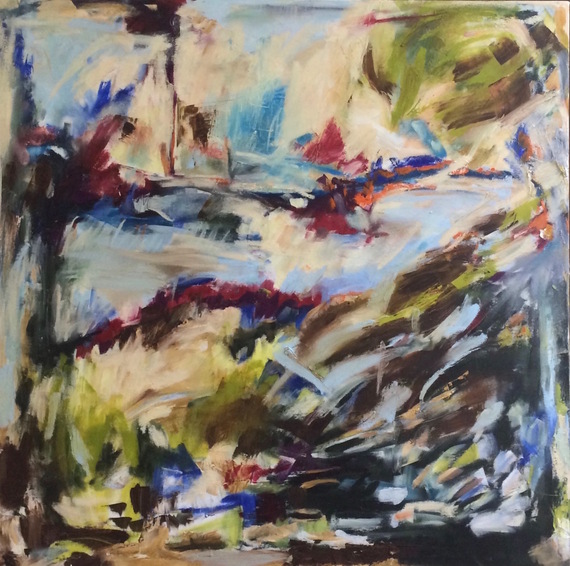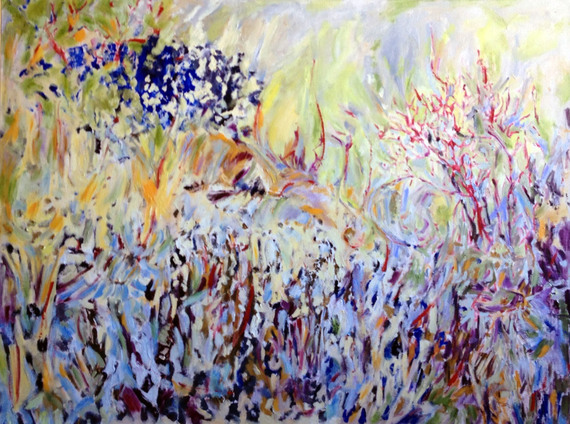Turn sideways into the light as they say
the old ones did and disappear
into the originality of it all.
Be impatient with easy explanations
and teach that part of the mind
that wants to know everything
not to begin questions it cannot answer.
David Whyte
I began my last post with a quote referring to as a studio a laboratory for exploration. One of the commenters challenged this assertion saying all artists do not take this view, that for some artists it is a production line where they reproduce artifacts.
True statement, there are production artists who create only what can be marketed, much as pop stars produce hit after hit.
This comment brought to mind an experience I had at a commercial gallery a few years ago. I went in and asked the owner if he was open to viewing work from unknown artists. He was, and he gave me some good advice. From his perspective artists need to show a consistent body of work, which he defined as repeated variations of the same painting. He pointed out the paintings on exhibit. There were maybe 10 or 12 paintings which seemed to be squeegeed paint in vertical pulls. Mostly monochromatic. He then showed me a catalog of this artists work, more of the same. I am not criticizing the artist nor the work. These were in the formalist school, paintings about painting, reaffirming the surface of the painting and not referring to anything outside the experience of the painting. The gallery owner made the point that he could sell this work to art investors because this artist had an identifiable style that varied little.
All very interesting and not the way I work.
I am not a production artist. I am in the experimental camp, my work proceeds from the questions I ask myself. If I were to "re-do" the same painting I would be bored, disaffected and disengaged. It is important to me to be focused and to feel inquisitive while I am working. I am trying to use my work to connect with others.
Regardless of the type of work you do, you have to decide what your intention and your purpose are, the reason for your work. If you want fulfillment and you want to have impact through your work, you must become self-aware, and you must build skills beyond technique.
When I started as a student of art and in the beginning years (when I called myself a "painter" not daring to be so bold as to proclaim myself an artist,) I was trying to learn techniques. I copied old masters, then explored the moderns, I poured paint and I experimented with tools and media. I was exploring and the entire shebang was about the product.
As I've gotten older I have come to realize that making art is part of the spiritual journey I am on. And my spiritual journey is part of my being an artist. To pay attention to the present moment and not be rushing toward the future or wallowing in the past is necessary for both art and any spiritual expression. To open yourself and listen is prayer. Grace, praise, healing, mystery and paradox constitute my artistic journey as they do my spiritual journey. I believe they are part of everyone's life and journey.
To my mind artists try to create work that touches some quality of shared human experience. Viewing art can give rise to emotional reactions within the viewer, enabling the viewer to explore and interpret those emotions and increase self awareness.
For me, as an artist, my work begins with experiences in the outer world. Through the process of painting, I synthesize observations and emotional reactions in a deep conscious/unconscious place and then externalize the inner experience.
Many creatives, photographers, novelists, poets, dancers, musicians work in a similar way.
I visited friends at Rockport, MA this past summer. We spent time at the quarries. The quality of light is varied at a quarry. The light bouncing off the water differs from the light reflecting from the granite and then the trees and under growth which surround the quarry absorb the light. You do not experience these multiple sensations in many other places.
When I returned I did two paintings inspired by the quarries and the light.
This 12 x 16 " oil on oil paper 
and this oil on canvas (36 x 36") entitled "Daylight irrigated the Quarry"
I present these as examples of synthesized experience expressed as paintings.
Continuing to grow in the studio means that I cannot rely on techniques that I have mastered. If I am not experimenting I am not learning. The explorations enable me to communicate by visual means, what I can not express in words. Artists must allow themselves to be vulnerable in their attempt to communicate the inner truths they are working to understand. When they show this work it is an act of courage, you are always aware of the possibility of failure. One of the best antidotes for fear of failure is to view the studio as a safe place for exploration. Working in this manner also puts me in touch with a feeling more commonly associated with child hood discovery. "Wow look what I found!" It is a wonderful thing when you look on a piece you have just finished and discover something new created by your hand.
Enriching the lives of others is only possible if I first tap the innermost regions of my being to express that shared experience, displaying my humanity, and my personal experiences.


